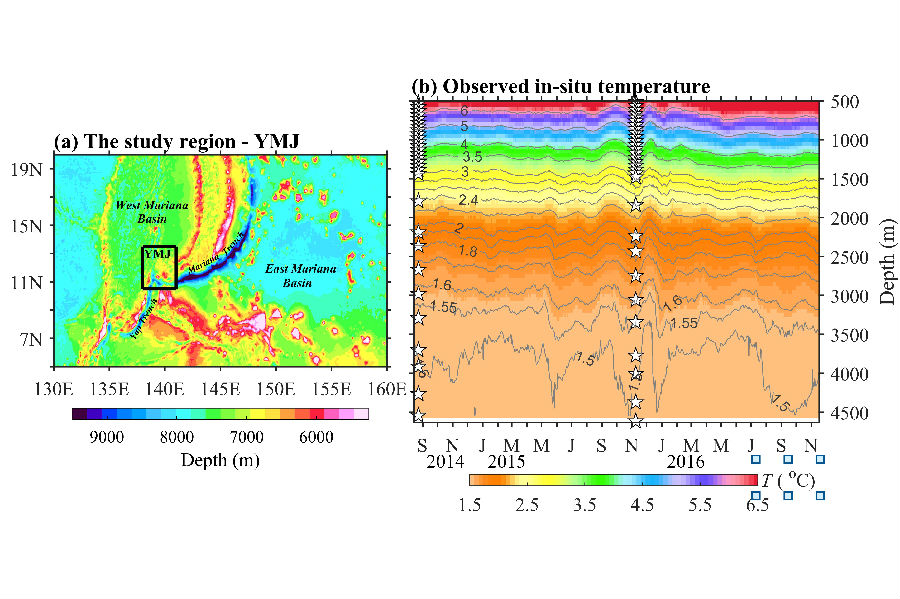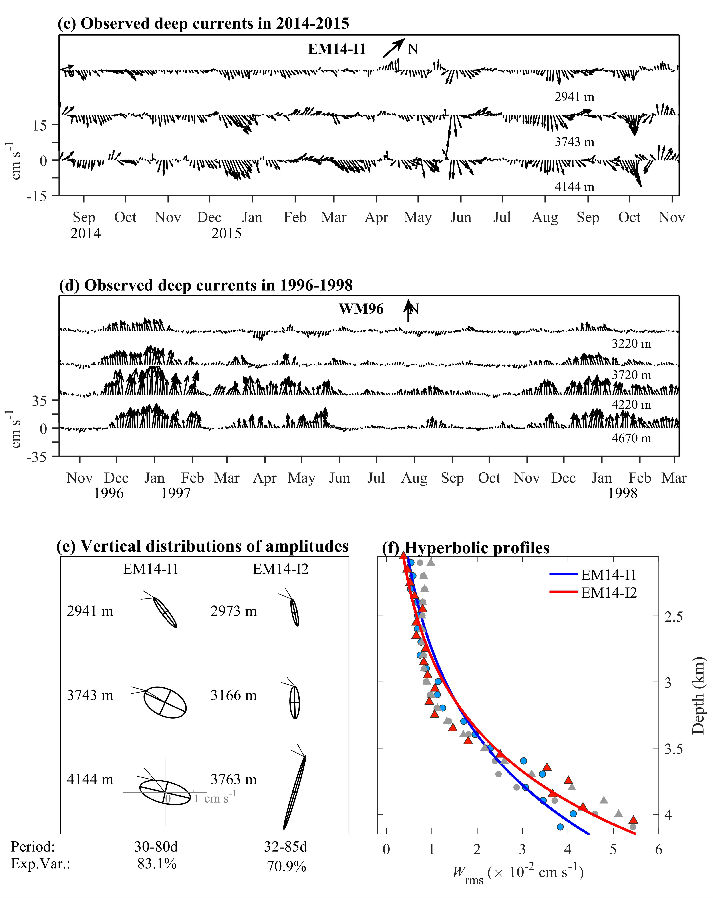Intensified Deep Ocean Variability Induced by Topographic Rossby Waves at the Pacific Yap-Mariana Junction
Published in Journal of Geophysical Research: Ocean, 17 Oct. 2019
In a deep channel at the Pacific Yap-Mariana Junction (YMJ), intensified variability of flow and isotherm displacement over 3000-4600 m is revealed by two separate observations: the recent one during 2014-2016, and the two 20 years ago during 1996-1998. Such intensified variability is demonstrated to arise from topographic Rossby waves (TRWs), since vertical profiles of observed currents reasonably conform to TRW features of hyperbolic intensification with depth and highly vertical coherence in phase. Mercator Ocean model outputs reproduce observed TRWs and are used to discuss their energy sources. Both the energetic surface eddy moving across rough topography and mixed barotropic-baroclinic instability of the background flow appear to be the candidates to generate TRWs.


Figure. (a) The study region-YMJ, (b) Observed in-situ temperature, (c) Observed deep currents in 2014-2015, (d) Observed deep currents in 1996-1998, (e) Vertical distributions of mode-1 amplitudes obtained from FDEOF analysis, (f) Hyperbolic profiles of vertical velocity derived from observed temperature.
Ma, Q., Wang, F., Wang, J., & Lyu, Y. ( 2019). Intensified Deep Ocean Variability Induced by Topographic Rossby Waves at the Pacific Yap‐Mariana Junction. Journal of Geophysical Research: Oceans, 124.
https://doi.org/10.1029/2019JC015490